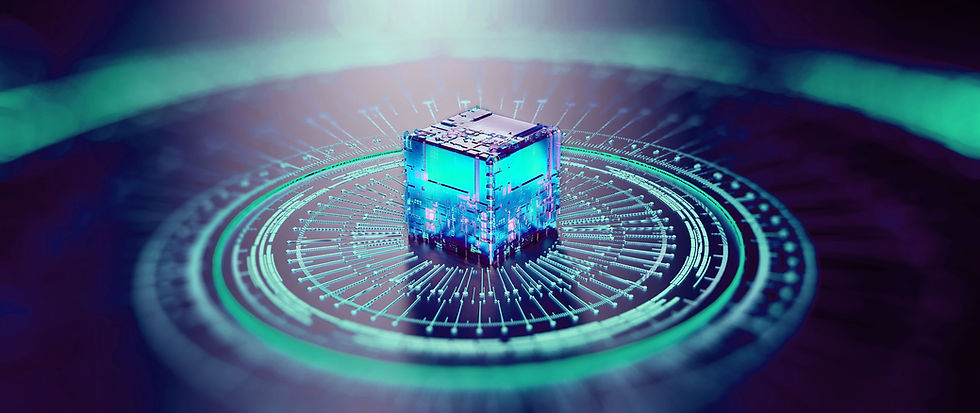Could lab meat be the answer to the environmental cons of cattle farming?
- Maria Matos
- Dec 7, 2021
- 5 min read

The world’s population is increasing and with that the amount of meat consumption is also rapidly escalating. “Supply and demand” is a basic principle of economics that is, very much simplified: “If people want this, we make more”. But the problem is that cattle farming has a big substandard effect on the environment. When digesting, cows produce and release a chemical which is methane. This chemical contributes a lot to global warming by attracting infrared rays from the sun and then trapping them in the atmosphere, with so many farms and so many cows per farm, this has become a real problem and if it is not stopped global warming will continue to reveal itself as more and more of a problem. Another problem of standard meat farming is that the cattle need space to live in and grass to eat, this is leading agricultural companies to start taking down forest which in turn contributes to deforestation and biodiversity loss.
Plant-based and insect-based diets are a way to begin in help solving this problem. But most people are very used to their meat-based diet and would have a hard time trading it for insects or purely plants. But in the 1950’s a Dutch scientist named Willem van Eelen came up with the idea of cultured meat, and it has been in development ever since. (cultured meat history, 2018)
Lab-grown meat, or cell-cultured meat is a potential meat substitute to the traditional and harmful way of cattle farming. Growing a piece of meat in a lab is a very complex process.
To create cultured meat scientist, begin by in a non-painful and harmless way removing a muscle-specific stem cell from any animals that have these ,kind of like drawing blood, luckily most of the animal we eat have these cells. Then scientist feed these cells, that are stored in a bioreactor, so they grow and multiply. What the scientists feed the cells is what they call “the media” and it is a liquid containing sugar, amino acids, and vitamins, basically everything the cell needs to grow. Then the cells turn into muscle fat and other tissues.
These cells are kept and monitored inside a bioreactor, and these are what poses the biggest challenge of creating this meat at an industrial scale. (Lab-grown meat: The future of food?, 2021) The meat takes about 2 to 3 weeks to grow, and the final product is real meat and is almost the same as it’s more famous counterpart. There isn’t much information about the nutritional value of lab-grown meat, but we do know that it can be manipulated to have the same nutritional value as regular meat. But it all depends on what’s possible when creating this in an industrial scale. (Would you eat lab grown meat?,2021)
As I mentioned before the bioreactors where the cells are kept and manipulated are one of the biggest challenges that scientist face when trying to make cultured meat a bigger thing. The most common size of bioreactor for the creation and testing of cultured meat is about one litre. But upscaling this could be a massive challenge, and though scientist won’t reveal the price of the process it will definitely be quite expensive. Right now, scientist is able to manipulate one cell in a one litre tank, but they still don’t know if it will be possible to do this with a bigger number of cells in a bigger bioreactor, this is one of the reasons why this idea is still in development. (Lab-grown meat: The future of food?, 2021)
The first cultured meat burger was made in 2013 by Mark Post at the university of Maastricht in the Netherlands. It was a burger patty made of over 20,000 strands of muscle tissue that was grown in the lab for over 2 years, because there are so many strands of tissue that need to be created and as I mentioned before it is quite hard to create the muscle tissue in a large bioreactor, this burger patty took a really long time to create and cost around 300,000$. (cultured meat history, 2018)
But how is this going to help solve all the problems created by the current method of cattle farming? Well, cultured meat takes a lot less space to create, rather than having this huge plot of land for all the cows and taking down forest for it. The meat can be created in a lab that is also useful for other thing and takes up much less space. “Yes, but the cows would still be necessary for getting the cells”. Yes, they would, but a lot less of them. Since the cells grow and multiply and the animal is not killed, a lot less cows are needed and since we can remove several cells from the animal (not necessarily cows also birds and pigs) A lot less space will be needed for them, a lot less cows would be killed and a lot less forest would need to be taken down. Allowing for better air quality and more shelter for wildlife.
Cultured meat is also not all good there are a few cons, for example: trust. Some people might have a hard time trusting cultured meat, because the idea of eating something that was grown inside a lab and isn’t directly taken from a cow can scare some people. Also, just the word bioreactor itself
Another problem for some people might be taste. Even though some scientists have run test and the most common answer was: “this tastes like meat” The cultured meat does not have bones or no fat, because of that some people might not appreciate the taste.
Concluding, Cultured meat is a very promising alternative to cattle farming It will be hard to implement and might still take a while to develop. But in a few years once it has been figured out and perfected it will be extremely helpful towards protecting the planet. I like to think that we don’t need it right now, but we will very soon. A lot of progress has been made and this will most likely continue to happen!
Sources:
“Can Lab-Grown Meat Become the Food of the Future?” YouTube, YouTube, 8 Apr. 2021, https://www.youtube.com/watch?v=UHChCqmFNZU.
FinancialTimesVideos. “Lab-Grown Meat: The Future of Food? | FT Food Revolution.” YouTube, YouTube, 29 Sept. 2021,
“Methane.” National Center for Biotechnology Information. PubChem Compound Database, U.S. National Library of Medicine, https://pubchem.ncbi.nlm.nih.gov/compound/Methane#:~:text=Methane%20is%20a%20colorless%20odorless%20gas.&text=Methane%20is%20a%20one%2Dcarbon,gas%20and%20a%20bacterial%20metabolite.
“Our Sustainable Future: Lab-Grown Meat.” Impakter, 26 Mar. 2021, https://impakter.com/our-sustainable-future-lab-grown-meat/#:~:text=An%20Oxford%20study%20in%202011,to%20half%20as%20much%20energy.
Staff, The Week. “The Pros and Cons of Lab-Grown Meat.” The Week UK, The Week, 30 Aug. 2018, https://www.theweek.co.uk/96156/the-pros-and-cons-of-lab-grown-meat.
Img 1- Wiener-Bronner, Danielle. “Singapore Becomes First Country to Approve Lab-Grown Meat.”
“Would You Eat Lab-Grown Meat?” Natural History Museum, https://www.nhm.ac.uk/discover/would-you-eat-lab-grown-meat.html.






Comments